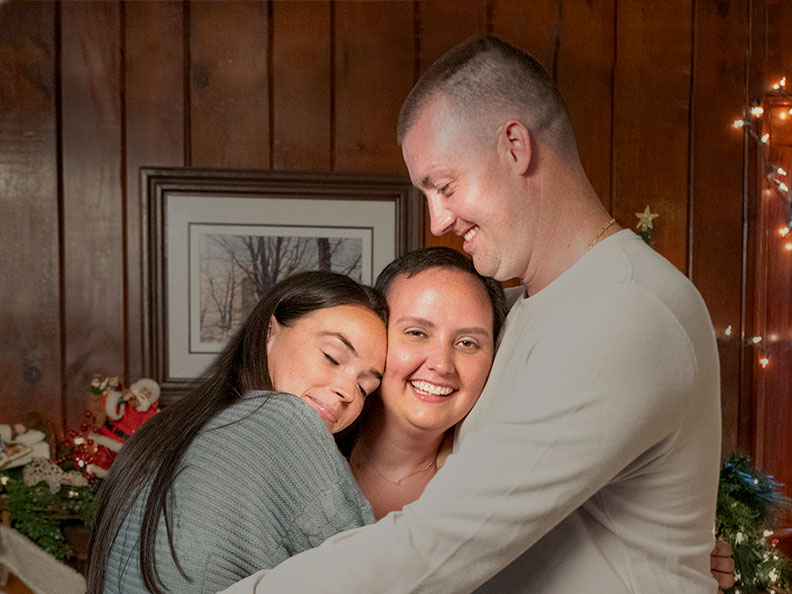Your gift is 100% tax deductible
Targeted Therapy for a Cancer of Unknown Primary
Targeted therapy uses drugs to identify and attack cancer cells while doing little damage to normal cells. These therapies attack the cancer cells’ inner workings – the programming that makes them different from normal, healthy cells. Each type of targeted therapy works differently, but all change the way a cancer cell grows, divides, repairs itself, or interacts with other cells.
Genetic testing for cancer of unknown primary (CUP) samples
The tumor sample, or biopsy, removed from a patient with a cancer of unknown primary (CUP) is typically tested for "targetable mutations. “
Names for this testing include comprehensive molecular profiling (CMP), next generation sequencing (NGS), or genomic profiling. The results show if the tumor has DNA mutations that might respond to current targeted therapies. Examples of tumor mutations which may respond include EGFR, ALK, ROS1, BRAF, NTRK, HER2, KRAS and others.
One target on squamous cell cancers of the head and neck is called epidermal growth factor receptor (EGFR). Cells from many of these cancers have too many copies of EGFR, which helps them grow faster and become more resistant to radiation or chemotherapy (chemo). A drug called cetuximab (Erbitux) blocks EGFR and can help patients with squamous cell cancers of the head and neck area. It’s often used along with radiation or conventional chemotherapy (chemo), but it can also be used by itself to treat people whose cancers no longer respond to chemo and who cannot tolerate radiation.
Targeted therapy drugs used for cancer of unknown primary (CUP)
Targeted therapy is now included as a treatment option for most types of advanced cancer. If a tissue of origin is suggested by gene expression profiling in a patient with CUP, treatment should follow guidelines for treatment of that cancer type, including targeted therapy or patient subsets with relevant mutations.
For example, advanced adenocarcinoma of the lung may exhibit one of several DNA mutations that can be effectively targeted (e.g. EGFR, ALK, ROS1, BRAF, HER2, KRAS, RET). Drugs targeting these molecular alterations are considered part of standard treatment for patients with these mutations. CUP patients with a predicted tissue of origin in the lung should be tested for all these mutations and should receive targeted agents according to the recommendations for lung cancer.
At times, next-generation sequencing (NGS) testing shows molecular alterations in unexpected cancer types. For example, HER2 abnormalities, which are common in breast cancer, are seen in a small percentage of patients with other cancer types, including colon, lung, biliary, pancreas, and uterine. Treatment with HER2-targeted agents has proven effective for these cancer types, as well as for breast cancer. If patients with CUP have HER2 abnormalities, HER2-targeted treatment should be considered, regardless of the predicted tissue of origin.
More information about targeted therapy
To learn more about how targeted drugs are used to treat cancer, see Targeted Cancer Therapy.
To learn about some of the side effects listed here and how to manage them, see Managing Cancer-related Side Effects.
- Written by
- References

Developed by the American Cancer Society medical and editorial content team with medical review and contribution by the American Society of Clinical Oncology (ASCO).
Bochtler T, Löffler H, Krämer A. Diagnosis and management of metastatic neoplasms with unknown primary. Semin Diagn Pathol. 2018 May;35(3):199-206. doi: 10.1053/j.semdp.2017.11.013. Epub 2017 Nov 26. PMID: 29203116.
Greco FA, Hainsworth JD. Carcinoma of Unknown Primary In: DeVita VT, Lawrence TS, Rosenberg SA, eds. DeVita, Hellman, and Rosenberg’s Cancer: Principles and Practice of Oncology. 10th ed. Philadelphia, PA: Lippincott Williams & Wilkins 2015: 1719-1736.
Lee MS, Sanoff HK. Cancer of unknown primary. BMJ. 2020 Dec 7;371:m4050. doi: 10.1136/bmj.m4050. PMID: 33288500.
National Cancer Institute. Physician Data Query (PDQ). Cancer of Unknown Primary Treatment. 05/06/2024. Accessed at: https://www.cancer.gov/types/unknown-primary/hp/unknown-primary-treatment-pdq on April 22, 2025.
National Comprehensive Cancer Network. NCCN Clinical Practice Guidelines in Oncology: Occult Primary (Cancer of Unknown Primary). v.2.2025. Accessed at https://www.nccn.org/professionals/physician_gls/pdf/btc.pdf on April 22, 2025.
Olivier T, Fernandez E, Labidi-Galy I, et al. Redefining cancer of unknown primary: Is precision medicine really shifting the paradigm? Cancer Treat Rev. 2021 Jun;97:102204. doi: 10.1016/j.ctrv.2021.102204. Epub 2021 Apr 5. PMID: 33866225.
Varadhachary GR, Lenzi R, Raber MN, Abbruzzese JL. Carcinoma of Unknown Primary In: Neiderhuber JE, Armitage JO, Doroshow JH, Kastan MB, Tepper JE, eds. Abeloff’s Clinical Oncology. 5th ed. Philadelphia, PA. Elsevier: 2014:1792-1803.
Last Revised: May 27, 2025
American Cancer Society medical information is copyrighted material. For reprint requests, please see our Content Usage Policy.
American Cancer Society Emails
Sign up to stay up-to-date with news, valuable information, and ways to get involved with the American Cancer Society.



